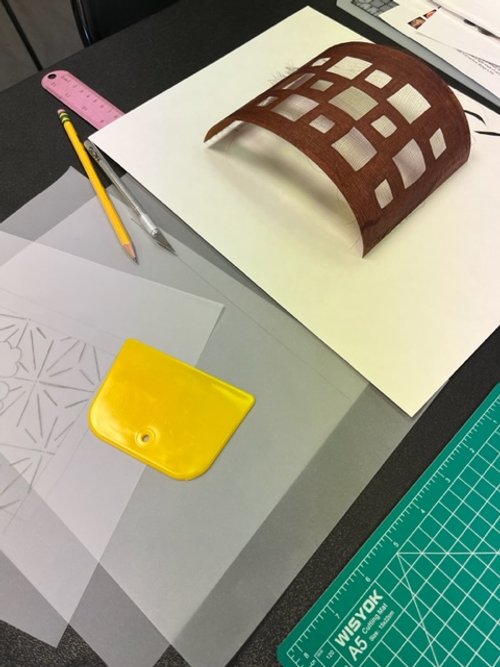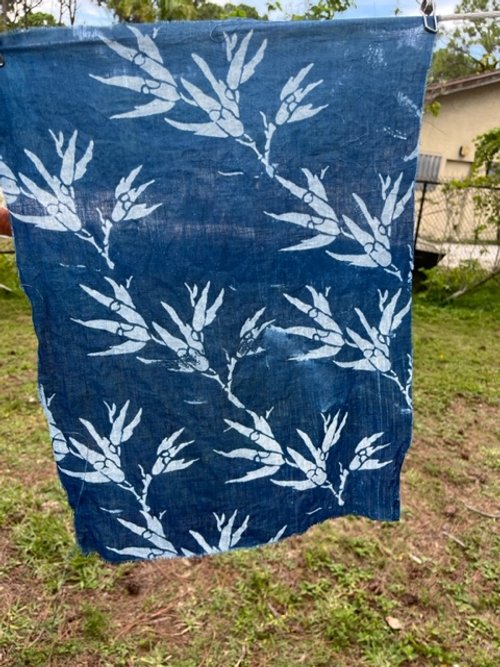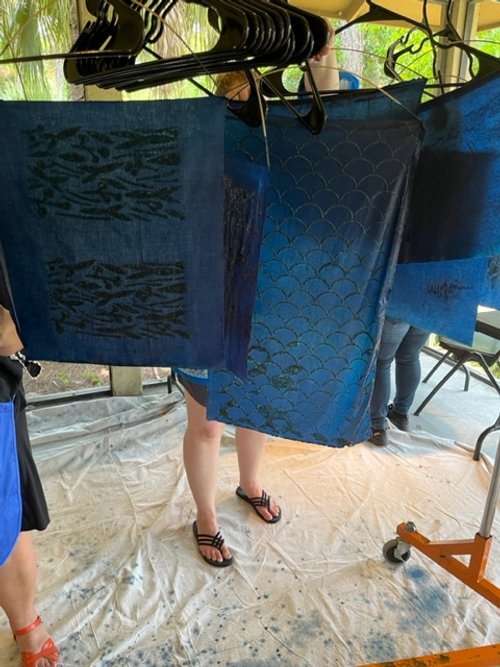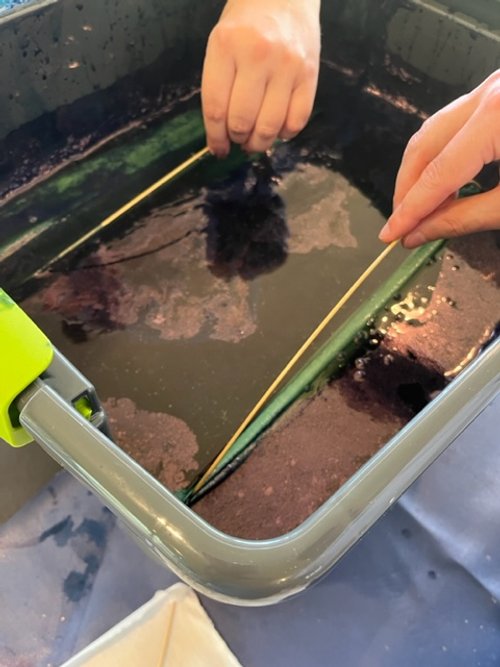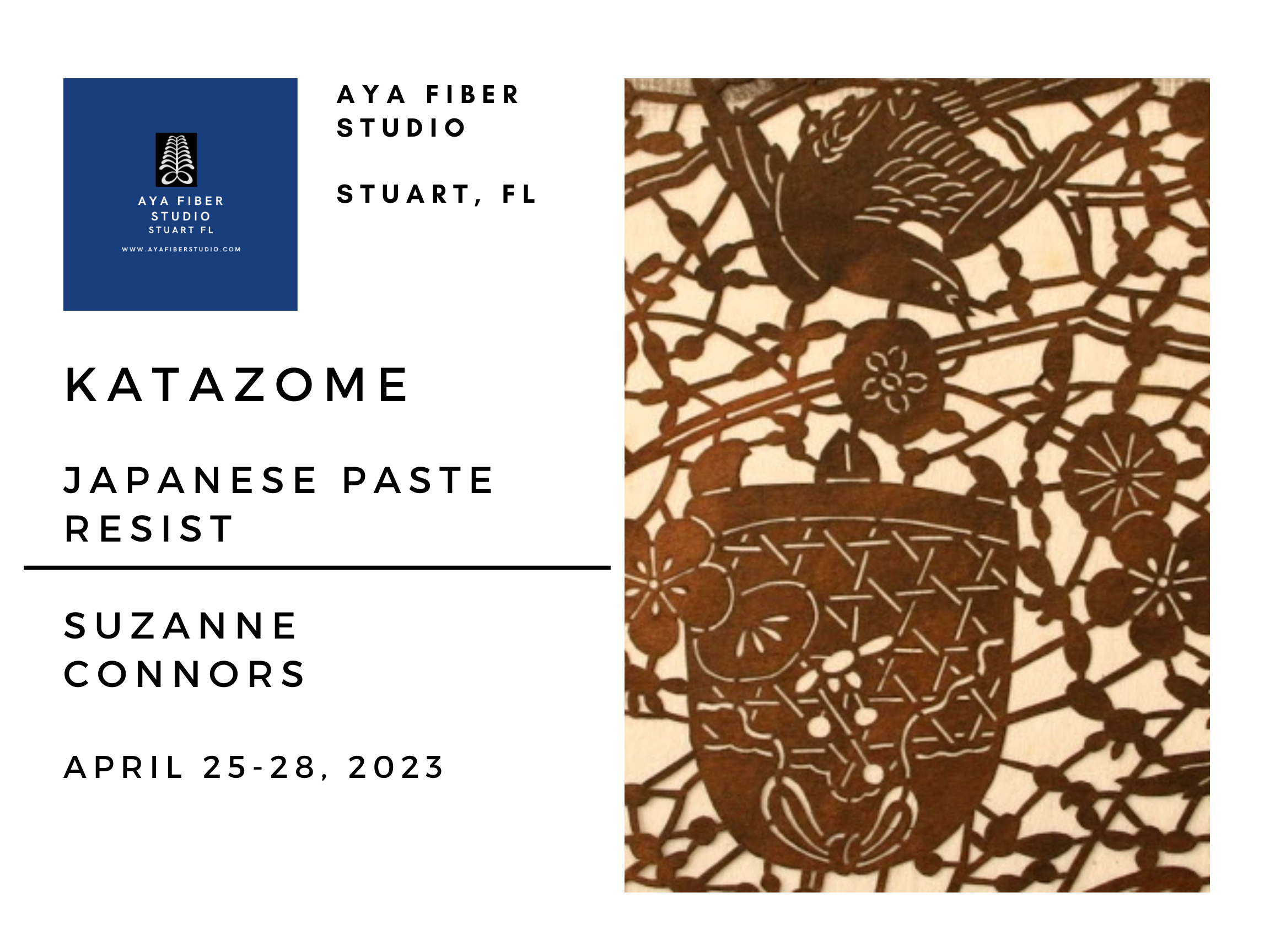Calendar of upcoming events.
Click on the Image for more Info

Interaction! Shibori Indigo Over Color with Carol Anne Grotrian
Experience the excitement of dyeing indigo patterns over color. Results can range from dramatic to subtle, with a bonus when the interaction of indigo and fiber-reactive dyes creates interesting haloes of color. The class will include instructions on mixing fiber-reactive colors and using an indigo vat and various Shibori techniques. There will be lots of time to create beautiful, unique fabrics as students team up to create solid colors that everyone can overdye in indigo shibori patterns.
While it is NOT required, students are encouraged to come up with a project in mind, such as a wall hanging, quilt, garment, or other textile.
No experience is necessary; experienced dyers are welcome.


Katazome: Japanese Paste Resist with Suzanne Connors
The traditional Japanese art of katazome is ancient. Kata means stencil and zome is a form of the word someru which means to dye- hence katazome (stencil dyeing)
The basic process of stencil dyeing is not complicated. First a stencil is cut and placed on a piece of fabric. Next resist paste is applied through the stencil. The
Stencil is then removed, and the pasted fabric is allowed to dry in the sunlight. Fabric is then treated with sizing if going to be dyed with pigments. Fabric is then dyed or the coler pigments brushed on.
Finally, the fabrics soaked in water to remove the paste.
The steps of katazome must be followed in sequence, and timing is essential.

Katazome: Japanese Paste Resist with Suzanne Connors
The traditional Japanese art of katazome is ancient. Kata means stencil and zome is a form of the word someru which means to dye- hence katazome (stencil dyeing)
The basic process of stencil dyeing is not complicated. First a stencil is cut and placed on a piece of fabric. Next resist paste is applied through the stencil. The
Stencil is then removed, and the pasted fabric is allowed to dry in the sunlight. Fabric is then treated with sizing if going to be dyed with pigments. Fabric is then dyed or the coler pigments brushed on.
Finally, the fabrics soaked in water to remove the paste.
The steps of katazome must be followed in sequence, and timing is essential.


